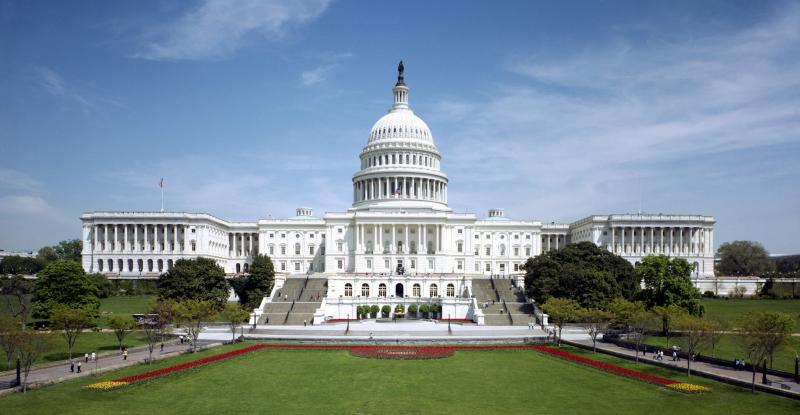FRIDAY FILE - Deciphering U.S. federal budget negotiating -- let alone from a gender perspective -- is no easy task. Fortunately several women’s rights organizations are doing just that. AWID interviewed Joan Entmacher of the National Women’s Law Center (NWLC) and Radhika Balakrishnan of the Center for Women’s Global Leadership (CWGL) at Rutgers University to help us unpack the rhetoric and decode what U.S. federal budget negotiations mean for women’s rights.
They show us that behind the technical jargon and hyperbolic politics, lie critical debates about the role of the state, struggles for rights and resources, and the social impacts of austerity.
By Amanda Shaw

What is the sequester and how did we get here?
The 2011 Budget Control Act (BCA) established the sequester as a way to pressure U.S. Congress to come up with a long-term plan to reduce the Federal Budget Deficit. On December 31st, 2012 the White House and Congress signed the American Taxpayer Relief Act (ATRA) to avert the so-called “fiscal cliff” - a combination of tax increases, spending cuts, and the expiration of provisions such as federal unemployment benefits set to unfold in January 2013. ATRA avoided the cliff by extending the deadlines for some of the expiring provisions and raised some taxes for the richest Americans. But the agreement failed to raise the debt ceiling (necessary to allow the U.S. to borrow enough to prevent defaulting on bills) and simply delayed spending cuts until March 1st 2013.
When this new deadline passed two weeks ago, the sequester came into effect, which is basically forced austerity that will cut domestic and defense-related spending equally by approximately $110 billion per year ($85 billion for 2013) over nine years, totalling USD 1 trillion.[i]
What did ATRA accomplish?
ATRA’s good news for women and poorer Americans included no cuts to Social Security, Medicaid and Medicare – services on which women, the majority of the elderly, rely for their income and health care;[ii]extended unemployment benefits that were about to expire; and renewed tax credits for low and middle income families, such as the expanded Child Tax Credit, the expanded Earned Income Tax Credit, and the American Opportunity Tax Credit (tuition tax credit) for five years. ATRA also increased taxes on income above USD 450,000 (USD 400,000 for an individual) but extended the Bush-era tax cuts on income below those levels.[iii] While this was the first such significant increase in income tax in years, some feel these didn’t go far enough and that “the White House lost tax revenues that it should have held onto.”[iv]
Aside from failing to address the key budget issues, ATRA’s bad news is that it failed to extend the payroll tax cut -- meaning many low and middle income earners will effectively face increased taxes, despite the income tax rate cuts. ATRA also fails to close corporate tax loopholes that, for example, make it easy for corporations to avoid paying U.S. taxes by shifting profits to overseas tax havens.[v]
How will the sequester affect women and poorer citizens in the US?
Designed as a bad deal to force Republicans and Democrats to come up with an alternative to solve the deficit, specifics on how the cuts will be implemented at each level are still emerging. Different government agencies are reporting that, at least temporarily, a number of budget and staff cutbacks will take place. Women’s rights advocates like Joan Entmacher of NWLC -- an organization closely following U.S. budget negotiations -- warn that cuts are likely to hit low-income women and women of colour hardest.
The possible effects of the sequestration on women have been explored by the Center for American Progress, among others. Cuts to education, health and public sector jobs could negatively affect women and poorer citizens who rely on, or work for, these programs. For example, cuts to Head Start (a comprehensive education and nutrition program) could lead to 70,000 children no longer qualifying, and the potential loss of teacher and special education aide and staff jobs.[vi]Cuts to women’s health programs such as Title X(the U.S. family-planning program), could strongly affect low-income women. More than USD 20 millioncould be cut from programs under the recently passed Violence Against Women Act, among other services that address domestic violence. Cuts to nutrition programs for seniors, women, and children – such as to Meals on Wheels and the Department of Agriculture’s Special Supplemental Nutrition Program for Women, Infants, and Children (WIC) and possible reductions in mental health services and HIV and AIDs treatment could also have negative consequences for women.
Significantly, around 70,000 public sector jobs may be cut, disproportionally affecting womenwho make up nearly 60 percent of public sector workers. In addition, cuts to foreign aid programs of up to USD 1.8 billion – especially decreases to health (USD 400 million) and food aid (USD 70 million) budgets – will negatively impact women and women’s organizations globally.
The deeper debate
While the sequester rightfully raises alarms, it is important to emphasize that U.S. policymakers still have the opportunity to act, and that this is only the latest in a longstanding political debate on how to reduce the federal budget deficit (by increasing revenue and/or cutting spending). “The big fight is over whether we should increase tax revenue at all – this is a big partisan debate,” explains Entmacher. “It may not sound like a women’s issue but because women depend much more on the programs [that are] getting cut -- because they have lower incomes, are more often single parents and more likely to be poor at all stage of their lives – the approach of cutting spending affects them greatly.” Yet Republicans in U.S. Congress have long prioritized domestic spending cuts as a way to balance the Federal budget, while Democrats tend to emphasize closing tax loopholes to raise revenue.
“Tax policy affects everyone,” explains Radhika Balakrishnan of CWGL, “And we need to look at it in terms of who is paying taxes.” Tax systems that rely more heavily on sales or value-added tax (VAT) to raise revenue may impact women and poorer households disproportionately, due to higher prices for goods or greater time burdens needed to make products from scratch.[vii] Balakrishnan highlights that such gender-blind approaches to indirect taxation assume that women’s labour is “completely elastic”, i.e. that it can increase or decrease in response to price changes, and means that the true costs of such revenue raising measures are not taken into account.
Missing the point?
As the budget negotiations continue, Entmacher thinks that many of these debates miss the point: “these are all artificial politically created deadlines and crises. The U.S. economy is doing well, we have good credit around the world, we can borrow money at low interest rates, and corporations are making healthy profits. We are not broke, so we shouldn’t act as though we can’t keep the U.S. running. Instead of all of these made-up deadlines, we’re ignoring some of the real economic problems – that we don’t have enough jobs that pay decently and equally.” In terms of deficit reduction, she adds, “there are tax loopholes for corporations that could be closed, and things like subsidies to agribusiness that we need to address.”
Indeed, the sequestration’s effects on the overall economy merit close attention. According to the Center for American Progress, the sequester could potentially reverse the U.S. economic recovery itself. Balakrishnan argues that the U.S. can learn from the experiences of countries like Ireland, “a lot of countries saw their debts increase as a result of the global economic crisis and then implemented austerity programs. Those austerity programs really slowed those economies. Even the IMF admitted that recommending such austerity was a mistake. Ultimately that lack of growth increases deficits in the long term. In the U.S., the biggest problem is not our debt and deficit. Our biggest problem is unemployment and an economy that is not producing. Focusing on fixing those problems is what will help us.” You can read more about CWGL’s work on gender, human rights, and the economy here.
A host of women’s rights organizations agree with her, calling on policymakers to refocus priorities on capturing revenue by closing corporate tax loopholes, generating employment, raising the minimum wage, and securing women’s economic security through strong health, childcare and retirement policies, including fending off attacks on women’s reproductive rights.[viii]
Find out how you can get informed and follow the negotiations
----
[i] Institute for Women’s Policy Research (IWPR). “The ‘Fiscal Cliff’ Fix -- The Good, the Bad and the Ugly” 3 January 2013. Available at: http://www.iwpr.org/blog/2013/01/03/the-fiscal-cliff-fix-good-bad-and-ugly/
[ii] Ibid
[iii] Income tax rates were increased on income above USD 450,000 for married couples (USD 400,000 for individuals), up to a maximum rate of 39.6%. Taxes on income from dividends and capital gains also increased from 15%to 20% for taxpayers with income above those levels. Though these tax cuts and increases in tax rates are described as “permanent” they could be changed by Congress. For more information, see National Women’s Law Center (NWLC) (2013)“A Roadmap to the 2013 Federal Budget Debates,” Updated February 2013.
[iv] Institute for Women’s Policy Research (IWPR). “The ‘Fiscal Cliff’ Fix -- The Good, the Bad and the Ugly” 3 January 2013.
[v] Citizens for Tax Justice (CTJ). “Revenue Impacts of the Fiscal Cliff Deal.” January 3, 2013, pg. 3.
[vi] The White House, Office of the Press Secretary “Fact Sheet: Examples of How the Sequester Would Impact Middle Class Families, Jobs and Economic Security” February 08, 2013.
[vii] United Nations Development Program (UNDP) (2010) “Taxation“ Issues Brief, Gender Equality and Poverty Reduction, No. 1, April 2010. pg. 4.
[viii] Interview, Joan Entmacher, NWLC.
